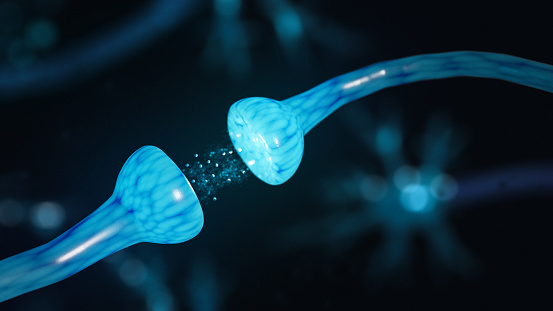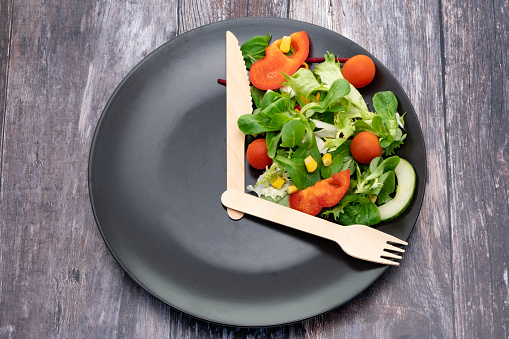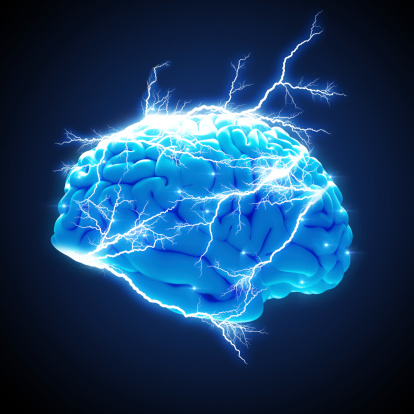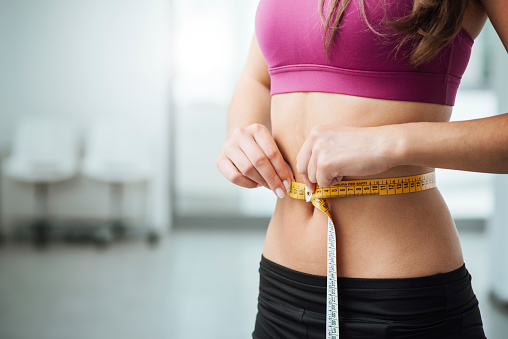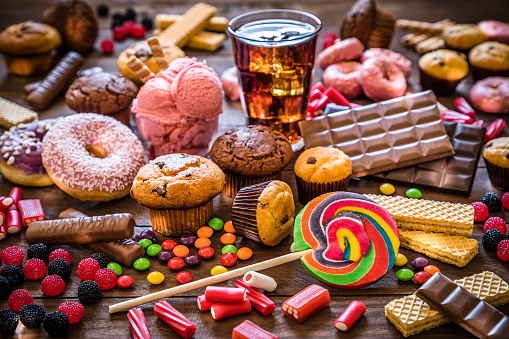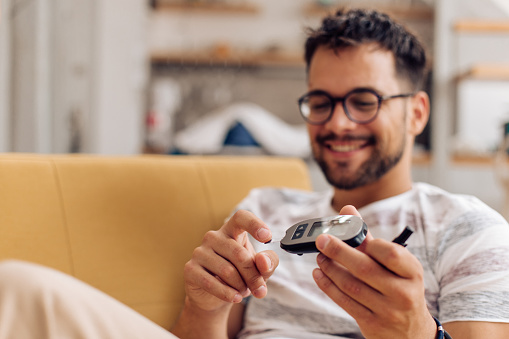The ketogenic diet can be a powerful way to lose some extra body fat. A lot of people are confused thinking “how is eating fat going to help me lose fat?” Well, we're gonna debunk that myth and then I'm going to give you three ways to practice keto the right way for weight loss and fat loss. I'm also going to show you how to do it the wrong way which can actually lead to weight gain. So let's get all into it.
Hey, Keto Kamper, Ben Azadi, here best selling author of four books, the founder of Keto Kamp, and here at keto camp we’re on a mission to educate and to inspire 1 billion people.
In this 10 part keto series we have documented how to do keto the right way, the right foods to eat, what are the right markers for ketosis, and so much more. This article is focusing on weight loss with keto. I'm going to outline for you three ways to burn fat and keep it off for good when you follow these three steps.
So without further ado, let's get right into this. First thing we need to understand is that we don't lose weight to get healthy. This is where a lot of educators and doctors and nutritionists get it wrong. The fact is, we get healthy to lose weight. I'm gonna say that again, so I really hope you understand this, as Dr. Berg says all the time and you know what, he's right. We don't lose weight to get healthy. We get healthy to lose weight.
So the question is, how do we get healthy? How do we use ketosis to get healthy? Well, it starts at the cellular level. Inside the body, we have 70 to 100 trillion cells. Inside each cell there is a DNA nucleus, yes, the genes you were born with that you cannot change, but you can change the expression of those genes. We have our little mitochondria, which is the engine of your cells, if you will, that produce ATP. Now, I’m going to relate this to fat loss.
We have at least eight fat burning hormones that we know of. I want to list three right here which is the thyroid, T3, the active form of thyroid, every cell has a receptor for the thyroid hormone, testosterone, human growth hormone, and other fat burning hormones.
But here's how weight loss works. Here's how your hormones which is the language of the human body works inside your body. Every cell has a lipid bilayer which is called the cell membrane. It's made up of, guess what, protein, saturated fat and cholesterol. Yes, you are made of fat. Your body loves fat, the right fat which we'll talk about later. Not carbohydrates.
In fact, less than 1% of the total body is made up of carbohydrates. So, on your cell membrane are your cell receptor sites. There can be around 30,000 of these receptor sites on one cell. Think of them as cell phone antennas, that are just receiving signals. What are they receiving signals from? From your hormones, your nutrients, your oxygen.
Now, relating this to your fat burning hormone, when you are in ketosis, doing it the right way, the way that I'm going to teach you here, your fat burning hormones send signals to your cells. The message is being heard, the mitochondria burns fat, you lose weight as a side effect and you produce energy so you feel good and you have high energy levels. That's the way you were designed to be. When you are not functioning this way. There is one reason for it and there's one word for it and that word is inflammation.
I know you've heard of inflammation from a sore shoulder from a CrossFit workout or a sprained ankle from basketball, that is inflammation, but what I'm referring to is cell membrane inflammation. When there's cell membrane inflammation, guess what? Now, your fat burning hormones cannot get into your cells and you're not going to feel well, you're not going to burn fat. So what we want to do is we want to use keto. I'm going to teach you three ways to use keto to down-regulate cell membrane inflammation and as a side effect, lose weight and you have more energy as a side effect. You get the results you want and guess what? They stick around. long term.
This is not yo yo weight loss, fad dieting here, this is true cellular health. Therefore stop focusing on weight loss and start focusing on cell membrane inflammation. And hey, when it comes to hormones, there's only one fat storage hormone in the body and that is insulin.
Here's a simple rule for you to understand - high insulin, fat storage, low insulin fat burning. So which foods cause the most insulin and glucose spike in the body? Carbohydrates and eating frequently. A ketogenic diet of rich in healthy fats barely touches the dial on insulin.
Insulin is the bully of the block. When you activate insulin, all of a sudden your fat burning hormones, they've scattered they're gone. They cannot coexist. Insulin is that bully and you activate it with carbohydrates. Therefore when you eat fat like you do on keto, you're keeping insulin low and you're in a fat burning state. Think of it this way. When you eat carbohydrates, your body raises glucose inside your body. It's a very tightly regulated system that wants to keep glucose low in the bloodstream, about one to two teaspoons in the body is considered normal. And when you eat carbohydrates, you have more than that. So the body calls the insulin troops to take the glucose out of the bloodstream, put it into your cells and store fat.
When you're eating keto. You don't have this problem. You're keeping insulin low and you're burning your own body fat and producing ketones. That's what we want to do here and that's what you're going to achieve. So let's get into these three ways to use keto the right way. So you could burn fat on keto, and keep it off for good.
Number one way is to understand clean keto versus dirty keto. Not all fats are created equal. You could be eating ketogenic fats, they might get you in ketosis, yet they're eliciting a strong inflammatory response. Remember, I showed you the cells and the inflammation around your cells. This can happen with bad unstable rancid fats on keto and a lot of people who do keto eat these fats, not knowing that they're creating a lot of inflammation in their body and they're wondering why they're not getting the results they want, on keto.
So what are these bad fats? It's the vegetable oils. It's the canola oil, corn oil, the grapeseed oil, the cottonseed oil, the soybean oils. Stay away from these vegetable oils. There was a study that showed these vegetable oils create 132 days of cell membrane inflammation. I've interviewed Dr. Kate Shanahan and Professor Peskin from MIT. And they all say that these vegetable oils are worse than smoking cigarettes. They create massive amounts of inflammation in your body, so let's stay away from that.
We also have things like the artificial sweeteners like sucralose and aspartame, which could create gut dysbiosis. Stay away from that on keto and stay away from the trans fats, the margarines. Those are bad fats. You want to get rid of them from your ketogenic diet and switch over to clean keto foods. Stable fats that help your cell membrane and allow these hormones to attach and burn fat - from sources like grass fed beef, grass fed lamb, pastured eggs, organic free range chicken, bison, nuts and seeds.
I have videos on my channel with lists and lists of healthy keto foods. But this is just a small sample for you to understand that healthy fats clean keto is key. Let's not be one of those keto bros that goes to McDonald's and grabs the Big Mac, asks for it without the bun and say hashtag we're keto. No, that might be keto, but that is not healthy. And that's not what we teach here at Keto Kamp.
The second tip for you to accelerate fat loss with keto is to add intermittent fasting to your ketogenic diet. Intermittent fasting and ketosis go hand in hand because they both do a great job at keeping insulin low. The way I teach it inside of the Keto camp Academy is to get fat adapted first with keto, get into ketosis, and then pair intermittent fasting.
Here's the analogy that I got from my colleague, Dr. Jason Fung. When you are eating carbohydrates and eating foods that stimulate glucose in the bloodstream, you're storing that as sugar reserves called glycogen stores. We could store about 2000 calories of these sugar reserves. So think of them as just strings of sugars, that your body's stores and packs away in your muscle and liver cells.
You can also think of it as the wallet in your pocket, which is very easy to get cash in and out of - that’s equivalent to your glycogen reserves. Very easy to put sugar in and take sugar out, very easy access, that's the benefit. The drawback is that there are limited reserves in your wallet, you can only put so much cash before it's packed, and then you need more wallets. Well, the body can only store about 2000 calories of the sugar reserves. And then you store body fat in excess. Not good.
So with adding fasting into the mix, you teach your body to start burning its own body fat stores. You teach the body to switch over and burn through that wallet, if you will, burn through your glycogen stores and start burning your own body fat. So I compare body fat your body fat stores on your body right now to the bank safe you have down the street. It's a longer process to get to that bank, but once you have access to the bank safe, there's almost unlimited reserves there and you could go days and - somebody has fasted over a year by the way, just burning your own body fat.
So we have an option here doing keto, we can get our keto calories from the plate of food in front of us, or we could get it from our butt our hips and our thighs, you choose.
So here's a great intermittent fasting schedule for you to follow on keto to get amazing fat loss results. It's called the 18-6 schedule. This is great for you to do on a daily basis and how it works is 18 hours out of the day, you are in a fasted state. You're just having some water, some sea salt, you're letting your body get its own calories from your body fat. Your liver is producing ketones and you're feeling good. You should feel like a rockstar if you've done this the right way. So your body's burning body fat throughout those 18 hours. Then six hours out of the day you have your eating window. Let's call it a feasting window, feast it up with ketogenic rich meals. Have two meals within those six hours. For example, 12pm you break you're fast and then you finish your second meal at 6pm. So 12 to 6pm eating window and then outside of that fasting window. If you follow that 18-6 schedule with your ketogenic approach, watch the fat just melt off.
Before I get into the third and final tip here. I have a quick question for you which is the question of the day. Do you currently practice intermittent fasting with your ketogenic lifestyle? And if you do, what is your go to schedule? Put a comment down below and let me know.
The third tip here is this when you break your fast break it the right way. We do not want to break our intermittent fast by combining carbohydrates and fat even if it's some carbs and fat because here's what happens when you break your fast. Your hormones are very sensitive. Insulin is very sensitive. This is good. We want sensitive hormones, but when you break the fast with some carbohydrates, you're going to spike glucose your body will do a great job at grabbing the glucose out of the bloodstream and taking it to your cells, unlocking the cell doors and driving the glucose into your cells.
Amazing. However, when you have fat with that carb meal, the fat goes along for the ride and it can actually slow down fat burning and maybe even cause weight gain. So don't break your fast with the combination of fat and carbs. Instead break your fast the right way and that's going to be with mostly protein and some fat. What would be an example of that? Well, I love bone broth, I personally don't make my own bone broth but hey, if you do, more power to you. Make your own bone broth. Not only is bone broth loaded and things like collagen and specific amino acids which really helped the body but it's also mostly protein and some fat which is the ideal meal for breaking your fast
My go-to for bone broth is with my friends over at Kettle & Fire. Click here to purchase their bone broth; we have an exclusive 15% off code with Kettle & Fire or you, use Keto Kamp at check out.
Another option for you to break your fast the right way is going to be with some eggs and some avocados and maybe some green leafy vegetables. That's mostly fat, mostly protein too, thumbs up. One more example, for you to break your fast the right way, it's going to be a fatty keto smoothie with some coconut milk, some collagen protein powder, some nut butters in there and maybe some ice blended all together. That's also a great way to break your fast. When you break your fast that way you're going to continue your fat loss efforts.
So those are your three tips for you to get amazing weight loss results on keto. Now what if you're doing all these things but you've hit a thought you hit a plateau? It turns out there's five reasons why I have seen people hit a Keto plateau and I have outlined all five of them. In the next article, and then five solutions for you to overcome that keto stall. So click that article right here and learn the five ways for overcoming a Keto plateau.
If you'd like to see the video version of this article, click the play button below.
How do you know if you're in ketosis? In this article, I'm going to break down five signs to pay attention to, in order to know if you are in the great land of ketosis.
As the best selling author of four books & founder of Keto Kamp where our mission is to educate and to inspire 1 billion people, it is my duty to help you succeed in your health goals. I'm super grateful you chose this article today, thank you!
So far, in our ten-part series, we have covered the very important details around the history of Keto and nuances that define clean keto foods & dirty keto foods, how to deal with common symptoms of keto - like the Keto flu, brain fog & fatigue and the specifics around the macros and calories on keto. So if you haven’t already caught up on the previous articles, I highly suggest you do.
Let's talk about ketosis. The great land of ketosis. How do you know if you're in ketosis? I'm going to give you five signs to pay attention to here and I'm going to teach you the optimal ways to test for ketosis. We’re going to talk about testing with urine, breath and blood. Which is the most accurate way to test, what are the optimal numbers to hit and by the way, the following methods will teach you how to know if you're in ketosis without even testing.
The first sign to look for, to know if you're in ketosis is, mental clarity. Your brain fog is gone. You’re actually recalling names very easily, you are able to adapt to stress and you have a focus and clarity that’s hard to describe. You know it when you feel it. You're super productive. You're on your A game, and you feel damn good. The reason is, ketones fuel the brain much more efficiently than glucose.
Did you know, breast-fed babies go in and out of ketosis? [1,2,3] It's because breast milk has saturated fat and cholesterol, which actually helps the development of the brain! Beta hydroxy butyrate, one of three ketones produced by the liver, actually crosses the blood brain barrier and it turns your brain right on. The brain is a fatty organ, it is only 2% of our body weight, but it sucks up about 20% of your body's energy needs. And guess what it's made up of? Mostly fat, about 70 to 80% of your brain is made up of fat. Your brain loves fat, so when you're in ketosis, you're giving your brain the building blocks it needs. That's the first sign right there. You are mentally sharp, no more brain fog, no more brain fatigue. You feel like a Keto Rockstar.
The second sign to pay attention to is, you're losing weight. Look, a lot of people come to keto for the weight loss but they stay for the health because when you follow a healthy keto lifestyle, weight loss comes as a side effect. It's a byproduct of getting healthy; we get healthy to lose weight. When you start dropping fat, burning fat, you are in ketosis. Your body has now stopped burning the glucose and the sugar, burned through its glycogen stores & sugar reserves and now it's burning your fat cells for energy. That's what we want.
So you're losing two pounds, three pounds, four to five pounds per week when you are in ketosis because your body is doing what it's designed to do, which is to burn fat. It is our primal birthright. We have been using keto for 2.5 million years. Burning fat as a side effect of ketosis.
Just one little caveat here. When you are losing weight on keto, you might feel a little worse before you feel better. The reason being, we store toxins in our fat cells, and let's face it, we live in a time and a place in this world where we are exposed to more toxins than ever. Toxins enter the body through breathing, eating, touching our skin, etc. The body is so smart. The number one priority of the body’s innate intelligence is survival. All it wants to do is survive. So when toxins enter the body, guess what happens? The body does not want those toxins to enter our vital organs like our heart, kidney or brain. So it activates the PPARY pathway, which actually signals those toxins to go and hide into fat cells or even creates new fat cells for those toxins to go live in.
The body is doing this as a survival mechanism. It's amazing, but the problem is this, when you start losing weight and burning fat on keto, which you will do now, the body cannot burn those toxins, but as it burns the fat cells, those toxins end up getting dumped into the bloodstream, which may cause you to not feel so good. If you are not sure about your toxin load, take my free toxicity quiz to get your score today.
So what are some things you can do? Bitters! Bitters, are better! Bitters will help your liver stimulate bile which will help take those toxins and get them out of the body. Here's a list of bitters I want you to incorporate on keto as you start burning fat. Arugula, dandelion greens, dandelion tea, ginger, ginger tea, lemon, lime and apple cider vinegar. Squeeze some lemon or lime on your keto meats and proteins. There are also herbs you can smell to stimulate the liver such as rosemary, basil and thyme. I also think it's a good idea to take an ox bile supplement. I use Systemic Formulas D digest. You can purchase this supplement here.
The third sign to look for, to know if you're in ketosis is that you can skip a meal, maybe two, and feel great. When you skip a meal and feel great, it means your body now has the metabolic flexibility to go from burning sugar to tapping into your fat cells and pulling energy from your fat cells. This actually sustains your glucose and insulin levels, to ensure you have peak energy levels and don't get hangry or have brain fog or get irritable because your body's getting those calories from its own body fat.
Isn't that super cool? You could get your calories from that plate of food in front of you. Or you can get your calories from your belly, butt, hips and your thighs. It's your choice. So that's the third sign to pay attention to, you skip a meal, and you feel like a rockstar. The opposite is true. If you skip a meal, and you feel like crap that's a sign that you're not in ketosis. You're not metabolically flexible, and there's still some work to do.
Question of the day: How do you feel when you skip a meal? Do you feel great or do you get irritable and hangry? Comment below and let me know how you feel when you skip a meal.
The fourth sign to pay attention to, to know if you are keto & fat adapted is that your sugar and carb cravings are gone. When we are in ketosis, we adjust and reset our metabolism but also our palate. So we start craving more healthy fats & proteins and less of the sugars & carbs. You don't have to grab a protein bar or a shake or some sort of sugary beverage every two to three hours. You're not craving that anymore. It's gone.
I've witnessed sugar addicts, myself included, reset their entire palate, cravings gone, like magic, disappeared. By the way, I was a carb-aholic and snack-aholic. I was a pure sugar burner; I was addicted to sugar. Now I have come to find out that the same part of our brain that lights up with a sugar and carb addiction also lights up with a cocaine addiction, making sugar as addicting as cocaine in this scenario.
The fifth way to know if you're in ketosis, which is actually the most accurate way to know is to test. There are three different methods for testing ketones, we have urine, breath and blood.
What is the best way to test for ketones?
Let's just take urine out of the equation. Unfortunately, ketone urine strips are not accurate, especially after the first couple of weeks of doing keto. Once your body and your brain is efficient at using ketones, it will not show up in urine. Meaning you're going to get frustrated, wondering, “why am I not in ketosis? I'm doing everything right!”, not realizing that your body's actually using those ketones, which is what we want. Needless to say, we don’t like urine strips here at Keto Kamp, so you can cross urine strip testing off the list.
The second option is, breath. Up until recently, I would say to stay away from breath. It wasn't really accurate but I came across a meter called biosense. I actually have it and they actually have created the first accurate breath ketone meter if you want to check them out. Click here, and use the coupon code ketokamp at checkout for $20 off your device.
Now, I want to focus on blood testing since it is the most accurate. Personally, I use keto Mojo. I love this machine because it tests your glucose and your ketone markers. You can purchase your Keto Mojo device here. This is how you know if you're in ketosis. If you test your blood ketones, which is beta hydroxy butyrate (BHB), and it registers as 0.5 or higher. Hey, congratulations, you're in the great land of ketosis.
The goal is not to necessarily have high amounts of ketones. We don't chase ketones here at Keto Kamp, we chase results. The sweet spot I've seen for most people is 0.8 to 2.8 on the keto Mojo machine. We also want to check glucose because if we have high glucose and high ketones, the body is going to burn the glucose first since glucose is a toxic fuel source and your body wants to get rid of that thirst. We want optimal numbers of glucose. The optimal numbers of fasting glucose is 70 to 90. Keto Mojo will give you that on a separate glucose strip. The optimal numbers for ketones, as I mentioned is typically between 0.8 to 2.8.
Now for some advanced testing methods for you. One hour after eating a meal, which is called postprandial, test your glucose again, if your glucose is 120 or below, that's a great sign. That means your body is metabolically flexible. That keto meal did you well. Two hours after eating a meal, you want your glucose to be 100 or less. Those are the optimal markers.
Please comment and let me know if you do test. Let me know what your numbers look like in the comment section down below.
A common question that I get all the time is, “okay, I'm doing keto, I’m eating all these saturated fats and cholesterol, but my doctor is telling me that I have to go on a statin because my cholesterol is high; my parents are worried that I'm going to have a heart attack, my friends are saying I'm going to have a heart attack; does keto cause high cholesterol and if so, does that increased your risk of a heart attack or a cardiovascular event?”
I want to bust the myth and break it all down for you and give you optimal markers to request from your doctor. In the next article, right here, you'll learn all about cholesterol and keto, and the optimal ranges to look for. This is the conversation you'll have with your doctor so you are empowered and understand how cholesterol and keto works.
If you'd like to watch a video of me breaking down this article, click the play button below.


